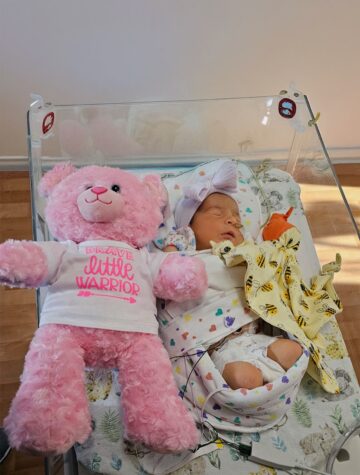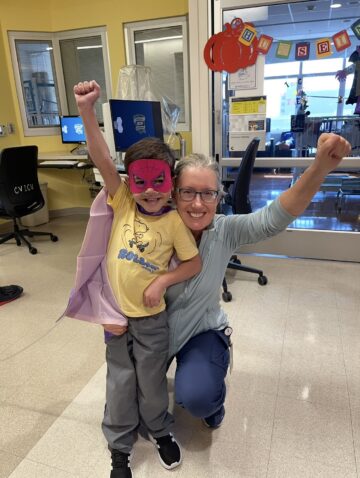Baby Hope looked into her mother’s eyes and gurgled.
Four days short of turning 9 months old, wearing a white onesie with the words “Best Gift Ever” on the front, she made more baby talk.
“You’re always a big chatterbox – what are you saying?” her mother, Elizabeth “Becca” Wyneken, said as she smiled and stared into Hope’s blue eyes.
Becca and Hope endured a lot to get to where they are now— a happy and very grateful mom and a relatively healthy 9-month-old baby girl whose light-brown hair is just starting to fill in.
The odds were stacked against Hope when she was born prematurely at 31 weeks and five days, weighing just 2 pounds, 3 ounces. Today, Hope is alive thanks to a team of doctors, nurses and others who cared for her throughout a four month stay on CHOC’s neonatal intensive care unit (NICU) and cardiovascular intensive care unit (CVICU).
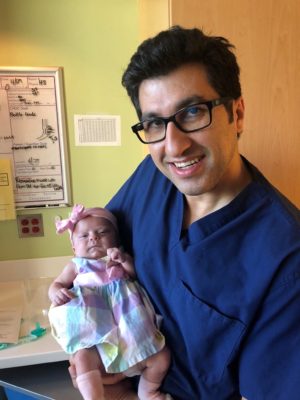
Hope was born with a complex heart disease, as well as only one kidney and defects on her right leg and foot. Her cardiac neonatologist, Dr. Amir Ashrafi, pegged her chances of survival at between 20 and 30%.
“Don’t worry, Mom,” Dr. Ashrafi told Becca. “I think we can help her.”
It would take an extensive collaboration between highly regarded cardiovascular interventionalists, some of whom were consulted at hospitals as far away as London, to do so.
And it would involve a high-risk procedure never performed on a baby so small at CHOC.
Grim news at 20-week scan
At 18 weeks pregnant, Becca, a teacher’s aide, went in for a checkup. Blood tests showed her baby had a high risk for Down syndrome and spina bifida.
Two weeks later, a scan of her baby’s anatomy revealed other potential problems.
Becca was told her baby had no kidneys, appeared to have no bladder, no right leg, no lungs, issues with her bowels, and a heart defect.
“I don’t think I stopped crying for the rest of the day,” Becca recalls. “It was horrible.”
Becca couldn’t drive home from the clinic; a friend had to pick her up. That night, Becca had dinner with her mother and aunt. Later, lying beside her mother, Becca cried.
“I can’t believe this is happening,” she said.
She felt a poke in her belly.
“Over and over again, when I got upset, she would poke me,” Becca said.
At that moment, she decided on a name for her baby.
“Hope,” Becca told her mother.
Second opinion reveals true complications
Becca got a second opinion about her unborn baby’s condition.
Her baby was missing a kidney and had a leg defect, she was told. Most seriously, Becca was told, the baby had a defect on her right ventricle, the chamber within the heart responsible for pumping oxygen-depleted blood to the lungs.
Hope’s aorta and pulmonary artery, which carry blood away from the heart, hadn’t developed properly. She had a hole in her heart as well as one in her left superior vena cava, a vein that helps circulate deoxygenated blood back to the heart. These defects caused blood to drain incorrectly; Hope would need a team of doctors to correct the blood flow.
“Being very small with complex heart disease, your options are very limited with what you can do and the timing of any procedures,” said Dr. Ahmad Ellini, Hope’s primary pediatric cardiologist.
There were lots of sleepless nights as Hope’s team of doctors and nurses monitored her closely. Becca was beside her nearly every night.
Dr. Ashrafi and Dr. Ellini consulted with two outside experts, San Francisco-based Dr. Mohan Reddy, who specializes in complex heart disease in small newborns, as well as thoracic and cardiac surgeon Dr. Glen Van Arsdell of Ronald Reagan UCLA Medical Center on the best course of action.
The team of physicians determined that a stent needed to be inserted under a pulmonary artery that was becoming too narrow making it hard for blood to flow through it. Such a procedure is risky, especially on a baby so small.
“In Hope’s case, the idea was if we could open up the area below the valve while not injuring the valve, that would be a home run,” said Dr. Sanjay Sinha, a CHOC pediatric cardiologist who put the stent in Hope’s heart. “Two things made this difficult: she was very small, and we had no stents this size.”
A vendor was able to secure the small stent needed a day before Hope’s surgery.
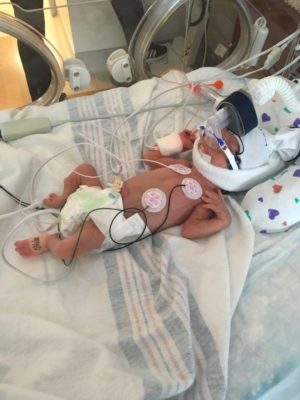
Assisting Dr. Sinha during the procedure was Dr. Michael Recto, medical director of CHOC’s Cardiac Catheterization Lab.
Observing the recently developed procedure, known as valve-sparing RVOT — or right ventricular outflow tract — stent placement, were several cardiologists from CHOC and other pediatric hospitals.
“In some patients, there is very little room for a stent. Hope had just enough room for the stent to be placed,” Dr. Sinha explained. “We knew we had the technical skills and ability to do this, but this had never been done before at CHOC on a baby this size.”
A very scary moment
After the surgery, Hope got seriously ill with a viral infection. At one point, Dr. Ashrafi said, her heart stopped but the team was able to revive her.
In cases like Hope’s, where a newborn’s state of health is fragile, members of her clinical team often must pivot in an instant, making their work schedules long and unpredictable.
Hope was at CHOC for four months before she was able to go home. After that, physicians at another hospital removed the stent, closed the hole in her heart, and corrected her left superior vena cava.
Dr. Ellini, who continues to see Hope at check-ups, is very pleased with her progress.
“She basically has a normal circulation,” Dr. Ellini says. “She needed a pacemaker. Overall, she’s doing great. She’s only on one medication and is gaining weight.”
In fact, she’s up to 13 pounds.
Dr. Ellini says he’s proud of the extensive collaboration that was involved in Hope’s care at CHOC.
“We try to really foster a collaborative team approach in our interventional lab, and this is a great example of that,” Dr. Ellini says. “Having a dedicated neonatal cardiac intensive team of physicians and nurses who are really experts in what they do really was paramount in making sure Hope did well.”
Becca can’t praise Hope’s team at CHOC enough.
“They’re totally lifesavers,” she says. “It was a roller coaster – heartbreaking and exiting. I was pretty much afraid all the time, but they treat you like you are family.”
Get more expert health advice delivered to your inbox monthly by subscribing to the KidsHealth newsletter here.
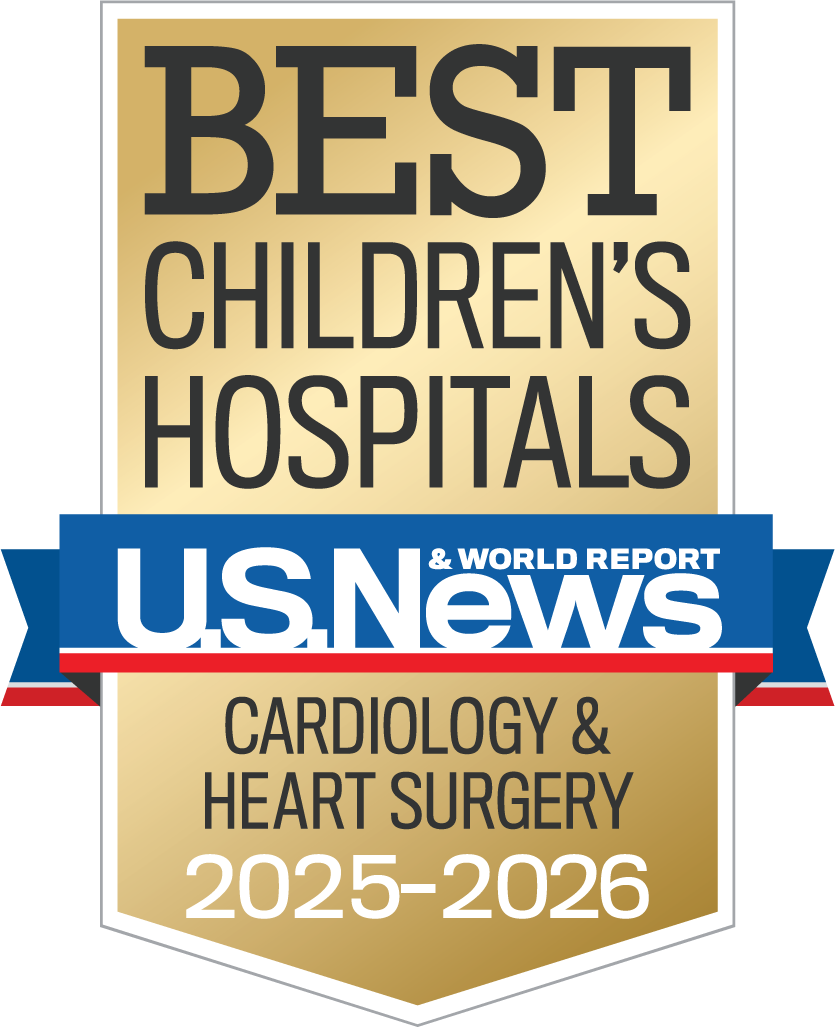
Learn more about CHOC’s Heart Institute
CHOC and UCLA Health together have been ranked among the top children’s hospitals in the nation for Cardiology & Heart Surgery by U.S. News & World Report.

